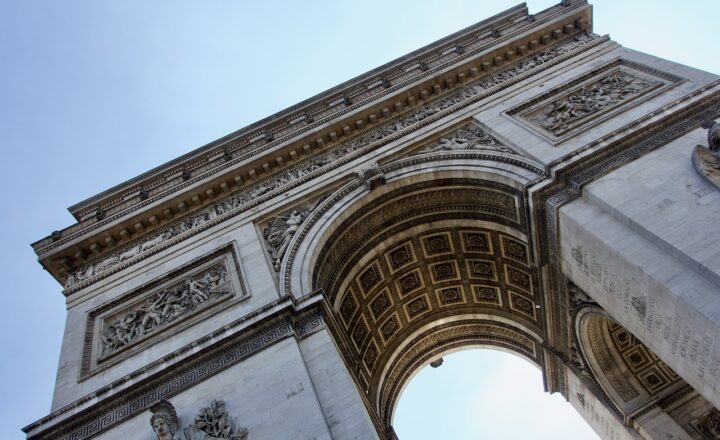The Mafia’s Role in the Black Market for Art and Antiquities
November 15, 2024

The world of art and antiquities possesses not only immense beauty but also an astonishing economic value. However, this realm has also been marred by crime, particularly through the involvement of organized crime syndicates like the Mafia. This article aims to explore the depths of the black market for art and antiquities and examine how these groups exploit vulnerabilities in the trade.
Understanding the Black Market for Art and Antiquities
The black market for art and antiquities refers to the illegal trade involving stolen, forged, or otherwise illicitly obtained art pieces and artifacts. This market not only encompasses high-value items but also challenges the cultural heritage and history behind these artifacts. Some key reasons for the existence of this black market include:
- High Demand: The demand for unique artwork and historical artifacts can lead to an explosion of illicit trade, especially as collectors seek to acquire these items at any cost.
- Poor Regulation: The art market is relatively unregulated compared to other commodities, making it easier for criminals to exploit loopholes.
- Cultural Instability: In regions experiencing conflict or social disarray, art and cultural artifacts often become targets for looting and trafficking, further exacerbated by organized crime syndicates exploiting these opportunities.
The illicit art market operates both locally and globally, utilizing various channels for the acquisition, sale, and distribution of these valuable items. Organized crime groups have established networks that facilitate the movement of stolen art across borders.
The Mafia’s Involvement: Tactics and Operations
Organized crime syndicates like the Mafia have long exploited the art market due to its high value and the lack of stringent regulation. Some of the methods they employ include:
- Theft and Burglary: High-profile heists often grab headlines, but smaller-scale thefts occur regularly. The Mafia may employ skilled operatives to target galleries, private collectors, and museums, stealing artwork with significant value.
- Forging and Counterfeiting: The Mafia also engages in the production of forgeries and counterfeit artworks, misleading collectors and galleries while profiting from these deceitful transactions.
- Illicit Auctions: They may organize or infiltrate underground auctions where stolen or fake artworks are sold to unknowing buyers, masking their illegal origins.
- Corruption and Collusion: In some cases, the Mafia has been known to corrupt officials, allowing them to bypass laws or regulations that would prevent the illicit trade of stolen goods.
These tactics highlight a larger problem: the often-undefined boundary between legitimate and illegitimate practices in the world of art and antiquities.
Case Studies: Infamous Heists and Transactions
Several infamous cases illustrate the Mafia’s involvement in the black market for art and antiquities:
1. The Isabella Stewart Gardner Museum Heist (1990)
In one of the most notorious heists in art history, two men disguised as police officers gained entry into the Isabella Stewart Gardner Museum in Boston. They stole 13 pieces of art valued at around $500 million, including works by Vermeer and Rembrandt. The heist remains unsolved, but speculation suggests that the Mafia may have played a role in the theft and subsequent sale of these pieces.
2. The Art of the Italian Mafia
In the 1970s, the Sicilian Mafia became heavily involved in art trafficking. They particularly targeted archaeological sites to pillage ancient artifacts, often smuggling them out of Italy for sale on the international black market. Several valuable items, including Roman sculptures and Renaissance paintings, remain missing to this day, with the Mafia suspected of orchestrating their disappearance.
These cases reveal just how deeply interconnected the art world is with organized crime and emphasize the ongoing challenges in combatting these illicit activities.
Impact on Art and Cultural Heritage
The consequences of Mafia involvement in the black market for art and antiquities extend beyond immediate financial loss:
- Loss of Cultural Identity: Many stolen artifacts have historical and cultural significance, and their illegal trade erodes the cultural identity of the regions they originate from.
- Undermining the Market: The fear of forgeries and the prevalence of stolen art create a precarious atmosphere for legitimate collectors, galleries, and artists, which can destabilize the entire market.
- Compromised Ethics: As individuals and institutions navigate the art world, the knowledge that artists can be complicit or unaware of the origins of their own work raises ethical questions about ownership and the commodification of art and history.
Combating the Black Market
Addressing the challenges posed by the Mafia and the black market for art requires a multi-faceted approach:
- Stricter Regulations: Governments should implement and enforce stricter regulations on the art trade, including comprehensive provenance documentation for high-value items.
- International Cooperation: Nations must collaborate to share information regarding stolen artworks and facilitate their return to rightful owners.
- Awareness and Education: Raising awareness about the issue of art trafficking and educating collectors and institutions on recognizing forgeries or suspicious provenance can help combat this illicit trade.
Adopting these strategies can protect cultural heritage and ensure that art remains a field free from criminal influence.
Conclusion
The Mafia’s role in the black market for art and antiquities underscores the complex and often troubling interactions between organized crime and cultural heritage. While the beauty and value of art are universally acknowledged, the darker side of this industry raises critical ethical and cultural questions that need addressing. Recognizing and combating the criminal activities intertwined with the art world is pivotal in preserving not only these treasures but also our shared cultural legacy.
The journey towards a cleaner and more transparent art market is ongoing, requiring effort from institutions, governments, and individuals alike, with the potential to restore integrity and honor the crafts that reflect our diverse human experiences.








